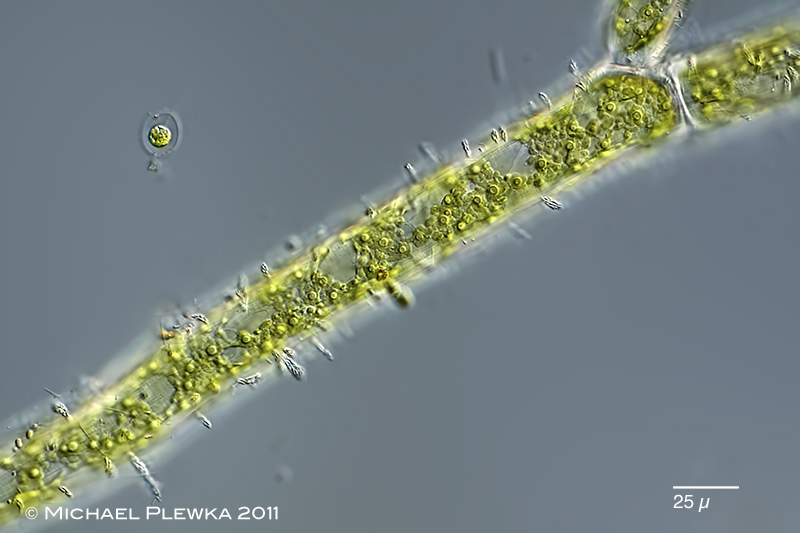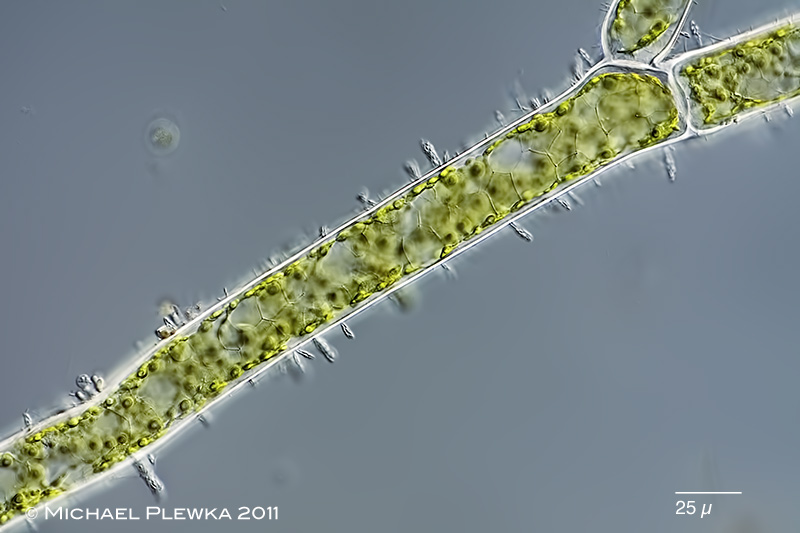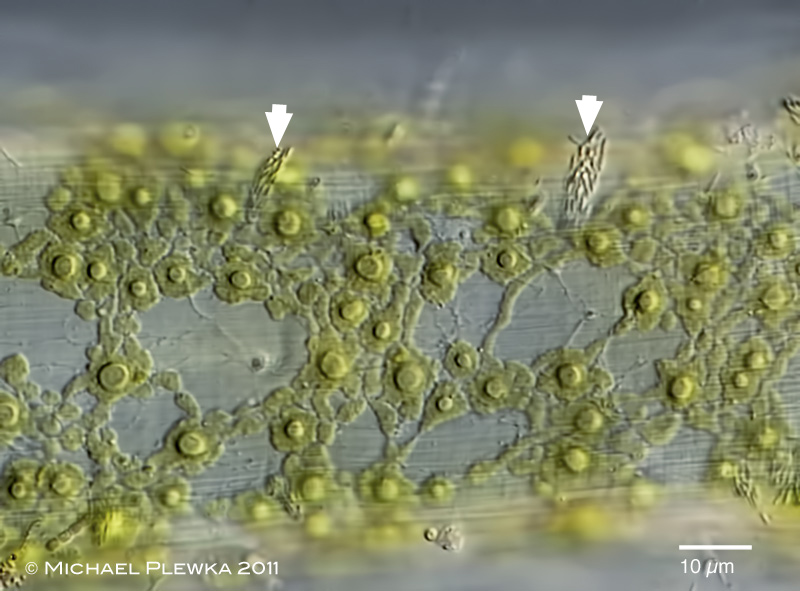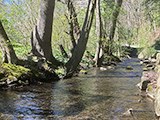| Cladophora sp.: The genus Cladophora can be recognized by the branched filaments. (1) |
| |
 |
| Cladophora sp.: focus plane on the periphery of the cell showing the single parietal reticulated chloroplast with pyrenoids. (1) |
| |
 |
| Cladophora sp.: optical median section of one of the cells showing the vacuolized cytoplasm. (1) |
| |
 |
| Cladophora sp.: detail of the net-like chloroplast with pyrenoids. Also visible is part of the finely striated cell wall. The arrowheads point to some ?bacteria? (1) |
| |
 |
| Cladophora sp.: this specimen is overgrown by epibionts like diatoms (here: Diatoma sp.; Gomphonema sp. and Cocconeis sp.) which serve as diet for other organisms like rotifers, for example Euchlanidae, Proalidae or Dicranophoridae (2) |
|
| |
 |
| Cladophora sp.: this ciliate Trithigmostoma cucullulus is feeding on diatoms living on Cladophora |
| |
| |
| |
| |
| Location: Stefansbachtal Gevelsberg, Grünes Klassenzimmer, Stefansbach (1); |
| Habitat: floating on stones (1); |
| Date: 16.06.2011 (1); |
| |
|
Location (2): Wetter, NRW, Germany ; Elbschebach (creek) |
 |
| |
| Habitat (2): (click image to enlarge >>>). Together with diatoms (here: Diatoma sp.; Gomphonema sp. and Cocconeis sp.) |
| |
| Date : 26.04.2021 (2) |
| |
|
|
|
|
|
| |
| |
|
| |
|